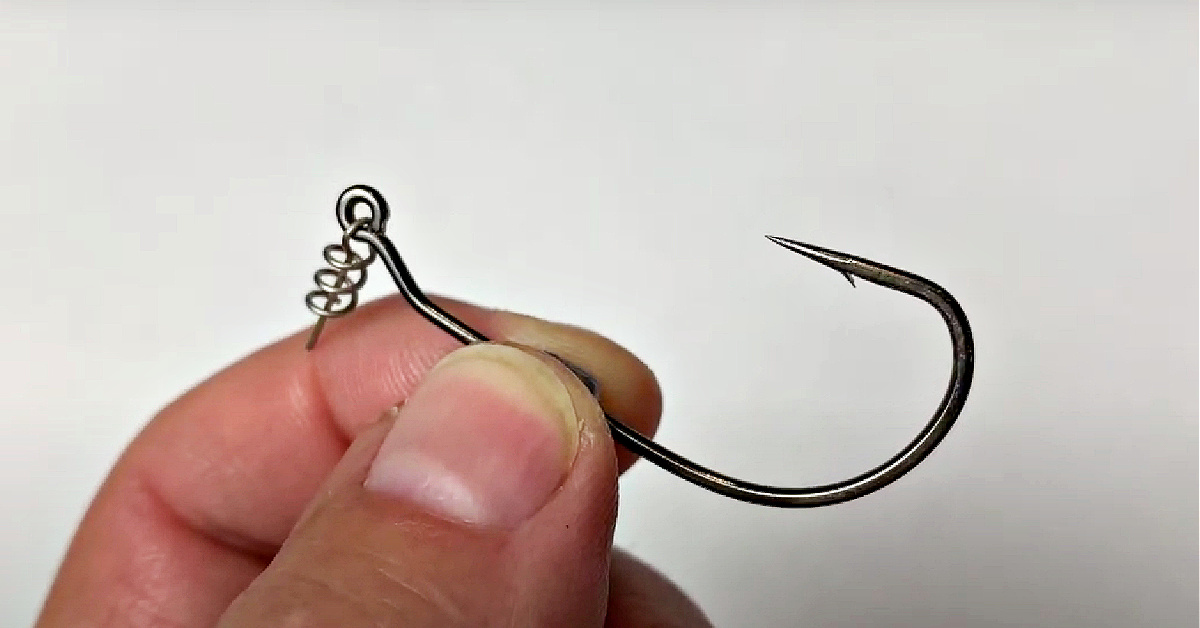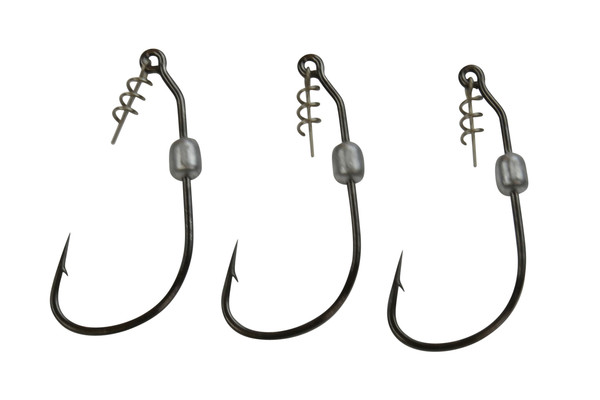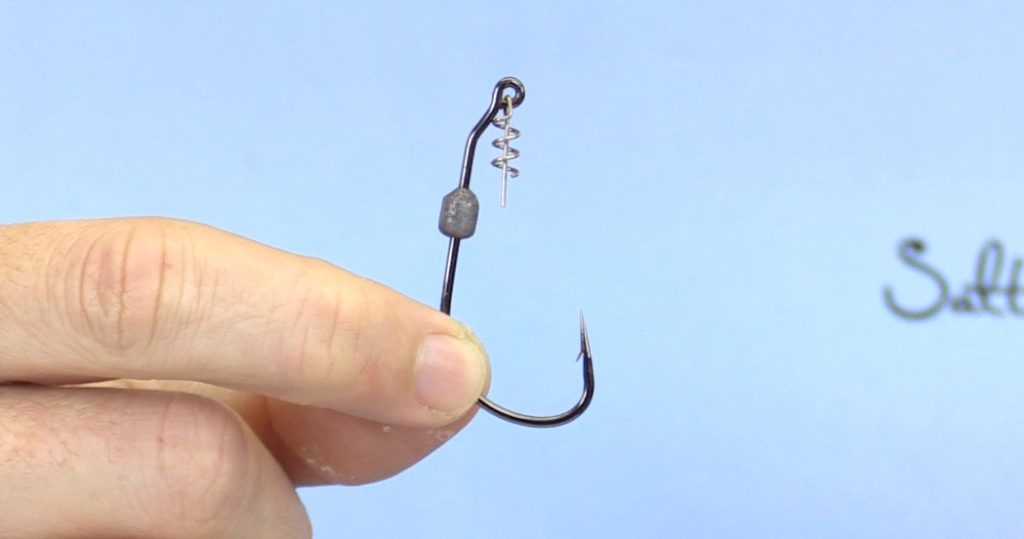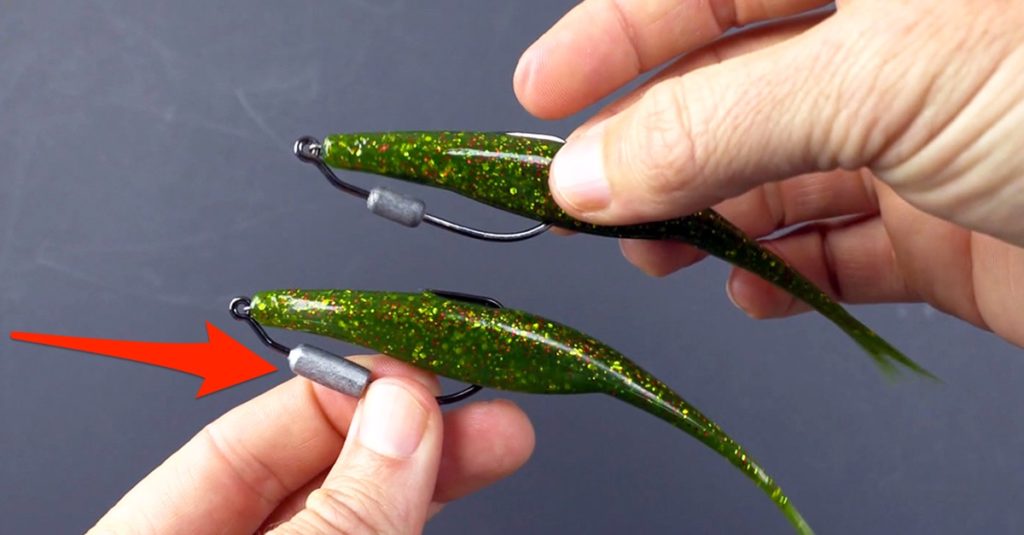Advanced Owner Weighted Twistlock Hooks Tricks & Mods
- By: Pat Ogletree
- on

Do you normally fish using Owner Weighted Twistlock Hooks?
What are the best and easiest ways to rig soft plastic lures on these weighted hooks?
Owner Weighted Twistlock Hooks are extremely versatile and useful for inshore saltwater fishing.
Learn about some rigging tricks here!!
Owner Weighted Twistlock Hooks

Not only is the Owner Weighted Twistlock Hook made of high quality, but it can be used in a variety of different ways with a plethora of soft plastic lures.
Basic Rigging Technique
Owner Weighted Twistlock Hooks have what’s called a center pin that inserts into the soft plastic lure to secure it to the hook itself.
First, you need to line up the center pin with the center of the soft plastic lure’s head.
Insert the center pin into the lure and stop it when it bottoms out on the spring.
Next, twist the center pin until it is completely locked into the plastic lure.
You want to also make sure the bottom of the lure is facing the hook point.
The next step is the most crucial in maintaining the desired presentation and security of the lure on the hook.
Before inserting the hook into the soft plastic, lay it alongside to see where the hook should be placed.
Use your thumb to mark where the hook point should enter the lure and then insert the hook point in and through the lure.
Then, you want to make sure the hook is centered on top of the lure.
This is to ensure the presentation will not be off and the lure won’t helicopter in the water.
Furthermore, you can either skin-hook the hook point or leave it slightly exposed.
Naturally, the slightly exposed hook point will have a better hook-up ratio than if you choose to skin-hook the point.
However, this eliminates the weedless advantage of Owner Weighted Twistlock Hooks.
It is smart to skin-hook your lures if you are fishing around heavy structure or the water is littered with grass and dirt.
Just make sure the lure maintains a streamlined presentation before you go fishing with it or else it will look unnatural in the water.
Advanced Rigging Techniques

1st Modification
For the first modification to the Owner Weighted Twistlock Hooks, you will need a pair of pliers.
The weights on these hooks are held on simply by glue.
First, take your pliers and grab hold of the weight and gently twist back and forth to release it from the glue but do not pull hard enough to break it off of the hook.
Now, you should be able to slide the weight up and down the hook.
Next, you want to slide it higher up and pinch the sides of the weight so it does not move.
When you move the weight up on the hook, it changes the way the soft plastic lure falls.
It will act more like a jighead would and the lure will fall vertically compared to horizontally when the weight was centered.
This alteration to the hook causes the lure to behave more like a shrimp darting in and out of the grass as opposed to a wounded baitfish.
You’re also able to cover more water faster because the lure will fall to the bottom quicker.
2nd Modification
The second advanced rigging technique involves adding weight to your twistlock hook.
For example, let’s say you only have hooks of 1/16 oz. in weight but you need a 1/8 oz. for where you are fishing.
All you need to do in this situation is add a split shot weight beneath the existing weight and you’ve got more weight on your lure.
If you choose to use little pinch weights, be sure the tag end is facing the lure and not out because it can snag on structure or pick up unwanted pieces of grass.
3rd Modification
The final modification you can make to the Owner Weighted Twistlock Hooks is completely removing the weight itself.
The reason you would remove the weight from the hook is if you are targeting ultra-picky fish in super clear, calm water.
This is an excellent approach for fishing potholes along the flats.
All you need to do is reel your lure along the bottom and let it fall down into a pothole.
Removing the weight also forces you to fish a bit more methodically and slow things down which is what will trigger strikes from finicky fish.
Let’s say you have some worn-out hooks that you were just going to throw away.
Instead of throwing the hooks away, we want to keep the center pin from these hooks.
To remove the center pin, use your pliers to twist the center pin off of the eye of the hook.
You can then use the center pin on any other tackle and gear you have to create a new presentation.
For example, you can now attach the center pin to a Colorado Spinner Blade or any piece of tackle you desire.
Then, gently pinch off the end of a jerk shad or paddletail to remove the tail.
Now, just as we did before, twist and lock your soft plastic lure onto the center pin but in the rear of the lure.
You’ve created your very own spinner bait!
All you need to do now is twist a new Owner Weighted Twistlock Hook onto the front of the lure and you’ve got a brand new lure presentation courtesy of a few slight modifications.
You can even put a drop of glue at the end with your modification to secure the attachment.
This technique will work with most plastisol soft plastic lures and will definitely work well with TPE plastics.
[optin-monster slug=”wcrcrc7d6ih5k29wooi4″ followrules=”true”]
Owner Weighted Twistlock Hooks [VIDEO]


Featured Equipment:
Conclusion

Owner Weighted Twistlock Hooks are a must-have for all inshore fishing situations because of their ease of applicability and versatility in rigging techniques.
There are lots of different ways of rigging soft plastic lures on these types of hooks and different modifications you can make to the hook itself.
Be sure to insert the center pin directly in the middle of the lure when rigging soft plastics on these hooks!!!
Do you have any questions or suggestions for rigging lures on Owner Weighted Twistlock Hooks?
Let me know down in the comments!
Please share your own modifications and tricks down in the comments as well!
And if you know someone who wants to learn more about Owner Weighted Twistlock Hooks, please TAG or SHARE this with them!
P.S. – Want to know how to retrieve all the different types of inshore fishing lures in a variety of ways? Check out our Artificial Lure Retrieval Methods Mini-Course.
Related Articles:
Related categories:
STOP WASTING TIME ON THE WATER!
Do what the “SMART ANGLERS” are doing and join the Insider Club.
Here’s what you’ll receive today when you join:
- Weekly fishing reports and TRENDS revealing exactly where you should fish every trip
- Weekly “spot dissection” videos that walk you through all the best spots in your area
- Exclusive fishing tips from the PROS you can’t find anywhere else
- Everything you need to start catching fish more consistently (regardless if you fish out of a boat, kayak, or land).










So I have issues screwing into Nikko silicon lures. Any suggestions?
If you can move the weight up, why would you ever need jig heads?
Thanks Pat.
No problem Robert!
Great post! Another trick I like to do, is grab pliers and bend the point of the hook a few degrees to the right, or to the left. It will still be just as weedless and effective, but my hook up ratio, and landing ratio seems to be improved. The eye of the hook and the point of the hook are very close to being perfectly inline. So if the fish has swallowed then entire lure, a hard hook set can completely pull the hook from the fishes mouth. By bending the hook point slightly out of line, it’s very helpful to catch the roof or side lip of the fishes mouth. I’ve found no negative side effects to doing this whatsoever, and have only found it beneficial. So if it only helps… why not.
Nice tip John!
Thanks Pat! Good stuff.
Thank you Paul!!
Thanks for the Video Pat
No problem Jerry!
It’s difficult to find the purchase area
https://fishstrong.com/collections/saltwater-hooks/products/owner-twistlock-hooks-for-soft-plastics?variant=32113142693973
Here’s the link to our store to purchase some of these.
Fishstrong.com for all other items we sell.
Good stuff Pat
Thanks & keep them coming.
Appreciate it Hugh!
Are these good hooks for fishing jetty rocks?
Thanks for the question Patricia.
These hooks are typically for shallow water like grass flats. The weight sizes only go up to 3/16 oz and jetty fishing usually requires a lot more than that do to the current. It’s best to use a standard jighead in that situation
Good stuff. Thank you, sir!